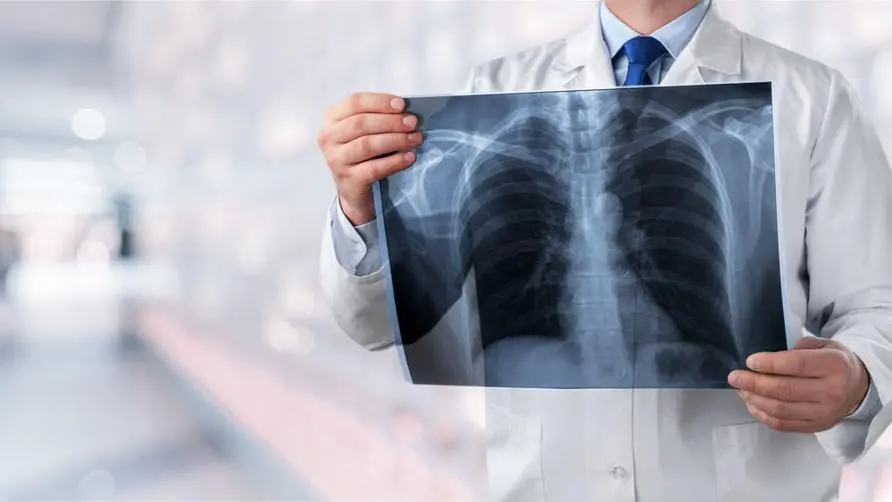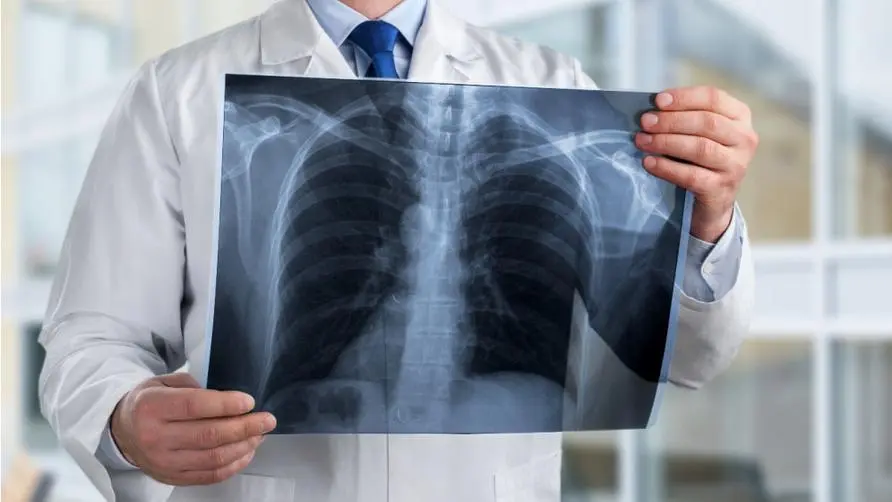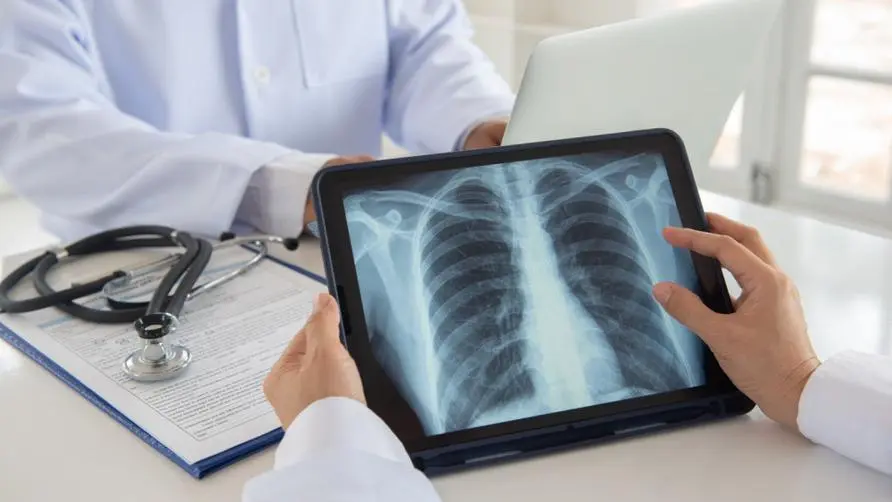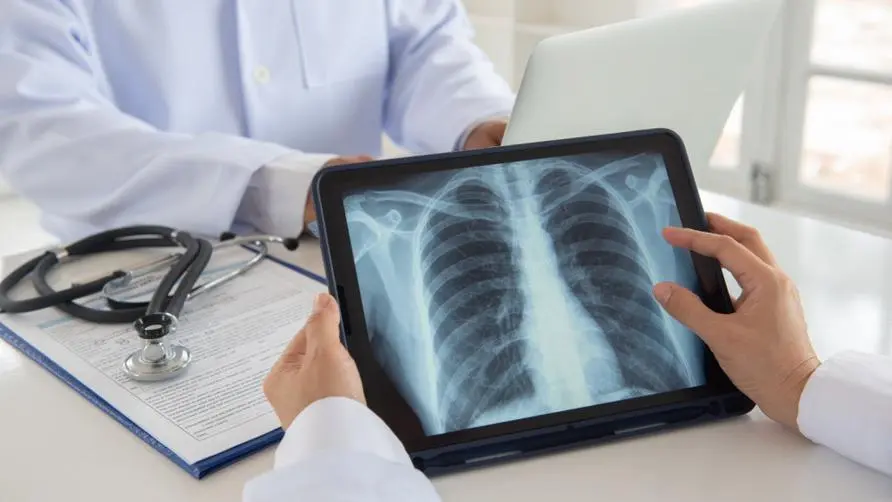"This cause" accounts for 80% of lung cancer! Is there a "ground glass nodule" that requires surgery? Two types of people should be screened as early as possible

Lung cancer ranks first among the “Top Ten Cancers”, and the survival rate in the fourth stage may be “only 10%”
Recently, it was reported that two “ground glass nodules” were found in the lungs of a politician during a CT examination. Fortunately, the nodules disappeared and his condition did not worsen. According to guidelines issued by the Taiwan Ministry of Health and Welfare, Health Promotion Administration, trachea, bronchi and lung cancer are often on the list of the top ten cancers, and even top the top ten cancers in 2021. The public is urged to pay attention to lung health at all times and take regular measures. Lung cancer screening.
The Taiwan Health Promotion Administration pointed out that in the past, lung cancer cases had high mortality and low survival rates, which were mainly related to the stage of diagnosis. In 2019, 4.2% of diagnosed lung cancer cases were diagnosed as stage 0, 29.1% as stage 1, 4.3% as stage 2, 12.3% as stage 3, and 50.1% as stage 4. Currently, the 5-year survival rate for stage 1 lung cancer is about 90%, and it is still over 60% for stage 2 lung cancer; for stage 3, it drops to nearly 30%, and only 10% is left when seeking medical treatment at stage 4.
Recommended reading: The later lung cancer is detected, the shorter the life expectancy? The survival rate at the end of the period dropped to “10% left”! “Group 2” are eligible for rapid screening
You must understand the “6 major risk factors” for lung cancer! “This behavior” accounts for 80% of the main causes of cancer
What are the risk factors for lung cancer? The Taiwan Health Promotion Administration stated that among the “six major causes” of common lung cancer in Taiwan, “smoking” is the biggest risk factor, and the rest are explained as follows:
Smoke damage. Smoking accounts for about 70-80% of the causes of lung cancer, and second-hand smoke exposure also increases the risk of lung cancer, with the cancer rate 20%-30% higher than that of the general population. Smoking at home or indoors will cause toxic substances to remain in the environment. The tar in cigarettes will be present on the surfaces of various objects in the environment, damaging lung health.
Air pollution. The impact of outdoor air pollution has been internationally proven to be carcinogenic to humans. Its main component, “suspended particulates (PM),” has also been assessed as a Class I carcinogen. Long-term exposure to air pollution may increase the risk of lung cancer. The sources of suspended particulates include nature (such as volcanic eruptions, earth crust rock disintegration) and human output (such as fossil fuels and industrial emissions, mobile source exhaust gas and other combustion behaviors).
Exposure to special workplace or home environments. People who are exposed to certain heavy metals (such as chromium, cadmium, arsenic, etc.), diesel engine exhaust or asbestos for a long time are at a higher risk of developing lung cancer. In addition, some special building stones contain a small amount of radiation and radon emitting gas. Excessive inhalation of radon gas can also increase the risk of lung cancer.
History of lung-related diseases. People with a history of lung diseases such as asthma, chronic obstructive pulmonary disease, and tuberculosis are at increased risk of lung cancer.
Family history of lung cancer. Studies have found that the occurrence of lung cancer is potentially related to family tendencies. That is, parents, children, siblings of lung cancer patients have a higher risk of developing lung cancer than those without a family history. This may be due to genetic factors or exposure to the same carcinogenic environment (such as Secondhand smoke, radon gas).
Cooking oil smoke. The cooking habits of Taiwanese people are different from those in European and American countries, and long-term exposure to cooking fumes poses potential health risks to the human body. According to past research on lung cancer among non-smoking female groups in Taiwan, women who do not use range hoods when cooking have a risk of lung cancer that is 8.3 times higher than those who use range hoods.
Recommended reading: Top 10 cancer deaths: Number of annual deaths from lung cancer exceeds 10,000. See symptoms, causes, and screening groups at once
Be careful if you have a history of smoking or family history! “Group 2” remember to screen early
In addition to paying more attention to high risk factors for lung cancer, the Taiwan Health Promotion Administration also reminds that people with any of the following risk factors for lung cancer and with health insurance status should take a low-dose computed tomography (LDCT) examination every two years:
People with a family history of lung cancer: Males aged 50 to 74 or females aged 45 to 74, whose parents, children or siblings have been diagnosed with lung cancer. If you smoke, you should agree to receive smoking cessation services.
Heavy smokers: 50 to 74 years old, with a smoking history of more than 30 years, willing to quit smoking (if they smoke, they should agree to receive smoking cessation services) or heavy smokers who have quit smoking within 15 years.
Recommended reading: Are the number of lung cancer cases rising more “younger”? Who should have a low-dose computed tomography scan?
Lung cancer screening detects “ground glass nodules” larger than “this centimeter” requiring surgical treatment
If “ground glass nodules” are detected during LDCT, is surgery necessary? According to the “Low-dose Chest Computed Tomography Lung Cancer Screening Manual” issued by the Taiwan Lung Cancer Society, when multiple lung nodules are found under computed tomography, the smaller the size, the less likely they are to become cancerous, but this cannot be generalized. In general, special attention is required when nodules are larger than 1 cm. Surgeons recommend that the size of the tumor removed during surgery should be about 0.8 cm, along with appropriate follow-up observation.
The Taiwan Lung Cancer Society stated that generally, lung nodules below 0.3 cm can be followed up after 1-2 years; for nodules around 0.5 cm, it is recommended to follow up within 6 months to 1 year to observe whether there are signs of enlargement. There are many pulmonary nodules, but not all of them are malignant, and small pulmonary nodules are almost asymptomatic. Therefore, patients should cooperate with doctors and screening procedures to detect early whether the nodules show signs of enlargement or disease.
Source:
Lung cancer risk factors - Taiwan Ministry of Health and Welfare, Health Promotion Administration
Low-dose chest computed tomography lung cancer screening manual - Taiwan Lung Cancer Society
Further reading:
The later lung cancer is detected, the shorter the life expectancy? The survival rate at the end of the period dropped to “10% left”! “Group 2” are eligible for rapid screening





